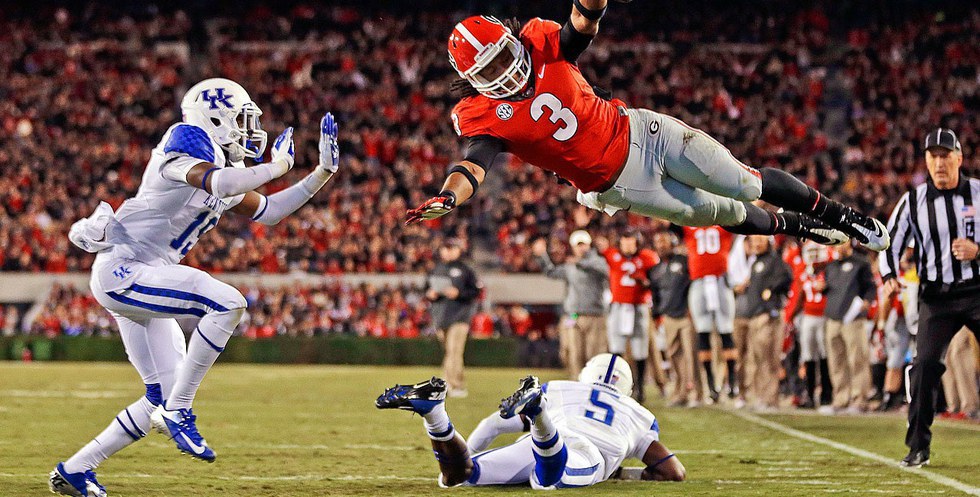College Athletes Should be Paid

PRO (4 arguments)
Grabbers:
1) “Did you know that out of the 120 FBS (formerly named Division 1) schools, only twelve
broke even or made a profit last year?
2) “Did you know that over 81% of all athletic programs lose money?”
College athletes put their bodies at risk to make money for their schools. They literally allow themselves to get hurt to help their school survive. Take for example, a college football player. They get injuries all the time, sometimes ruining their whole entire lives. But, they don’t get paid even a penny!
A study sample by Science Daily consisted of 573 male and female collegiate athletes from an NCAA Division I institution participating in 16 team sports. Participants reported 1,317 injuries during a three-year period. A total of 319 male athletes sustained 705 injuries, and 254 female athletes sustained 612 injuries. Estimates vary as to the number of young athletes who die from sudden cardiac arrest, but it could be as many as one in 28,000, according to the British Journal of Sports For the 26-year period from the fall of 1982 through the spring of 2008 there have been 22 fatalities, 63 disability injuries, and 126 serious injuries for a total of 211. During this same 26-year period of time there have been a total of 106 indirect injuries and all but twelve resulted in death.
College athletes spend all day in classrooms. Right after they must spend hours training. These athletes spend their free time practicing their sport. Instead, they could be studying for their exams but they decide to spend their time by practicing. Many athletes don’t have time to have a job so they don’t have money to buy food and pay for books. Other students have the opportunity to have jobs and work after school to get extra spending money. However, the athletes spend time after school playing in games and practicing. Millions of dollars are brought in from the games, and none of it is given to the athletes, who actually play in the games.
College football players spend an average of 43.3 hours on their sport — playing games, practicing, training and in the training room. Division I baseball players said they spent a little more than 42 hours on their sport. In men's basketball, it was slightly more than 39 hours on their sport. Women’s basketball players said that they spent more than 37.5 hours per week on their game.
HORRIBLE LIVING OF ATHLETES: The report also found that the room-and-board provisions in a full scholarship leave 85% of players living on campus and 86% of players living off campus living below the federal poverty line. - DAILY FINANCE
The University of Florida had the highest combined football and basketball revenues while its players' scholarships left them living $2,250 below the federal poverty line and a $3,190 scholarship shortfall. - DAILY FINANCE - While this happens, the colleges, as well as the staff, make millions
Coaches are paid by the colleges, so why shouldn’t athletes. The athletes are the ones who are actually playing the sports. It just makes sense that they should be paid just like the coaches. In addition, if actual athletes get paid by their teams, then why shouldn’t college athletes get paid.
According to the New York Times, the combined 2011 salaries of the highest-paid college football coaches is $53.4 million, and this is only from the top college football coaches; no other sports or the lower college football coaches are accounted for in this statistics. The combined salaries of all college athletes amount to $0. Nick Saban, a college football coach had a 2012 salary of $5.32 million.
If the athletes are injured during their college years, this will limit their chances of becoming professional athletes. We need to make sure that they are paid so that they feel like they are compensated for their efforts. If an athlete gets seriously injured during a game, the athlete’s whole entire life will be changed. For example, they won’t be able to pursue a career in the sports they excel in therefore turning their life completely upside. These students put their whole entire lives at risk and at least need to be paid for the risks they make.
Concussions at all levels of football are a tremendous problem as of 2011, with a growing number of retired professional football players suffering from dementia after repeated concussions during their playing days. Among college football players, 34 percent have had one concussion and 30 percent have had two or more concussions. As the University of Pittsburgh Department of Neurological Surgery reports, if you have a second concussion, even a minor one, soon after the first concussion, you might die. A total of 26 deaths, most occurring since 2000, are attributed to "second impact syndrome." The neurological effects of concussions in college athletes also can result in learning disabilities and severe memory impairments. There is a lower, but significant, incidence of concussions in soccer as well.